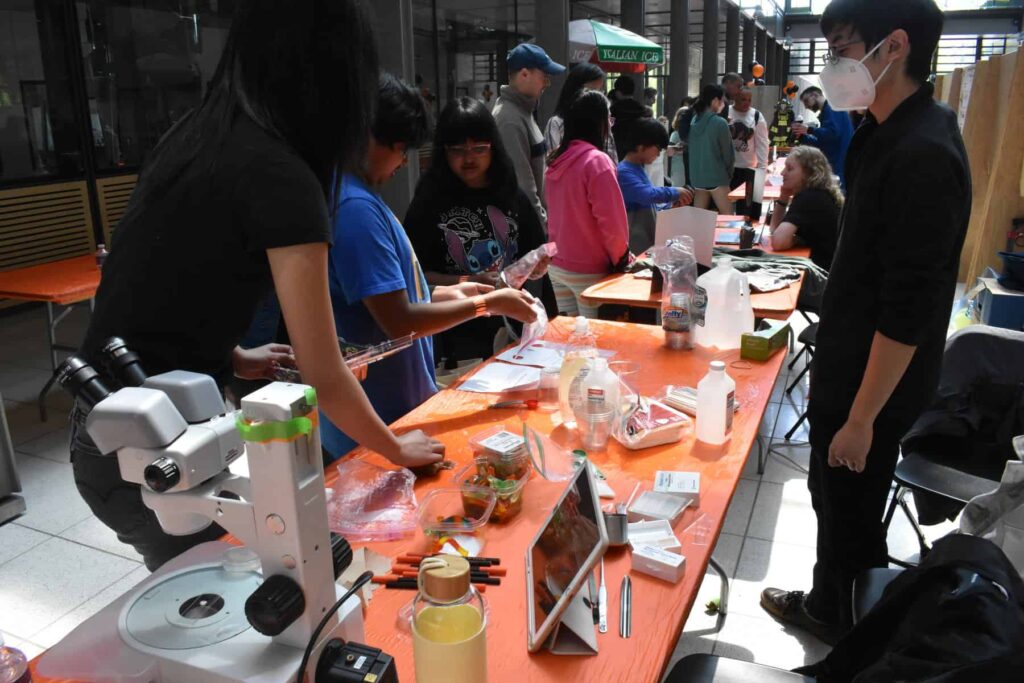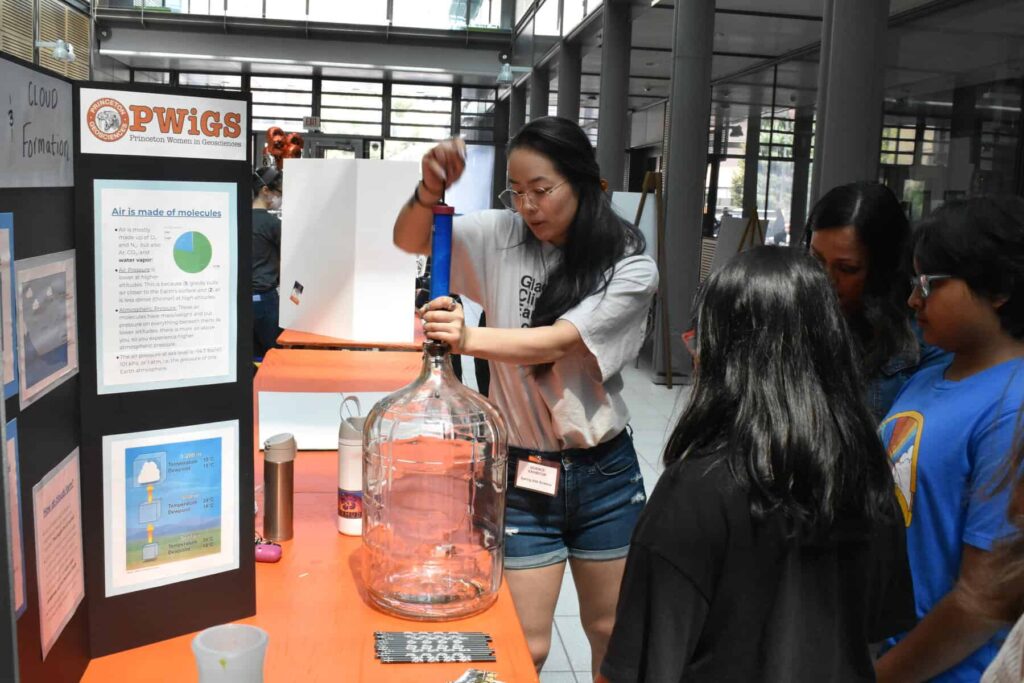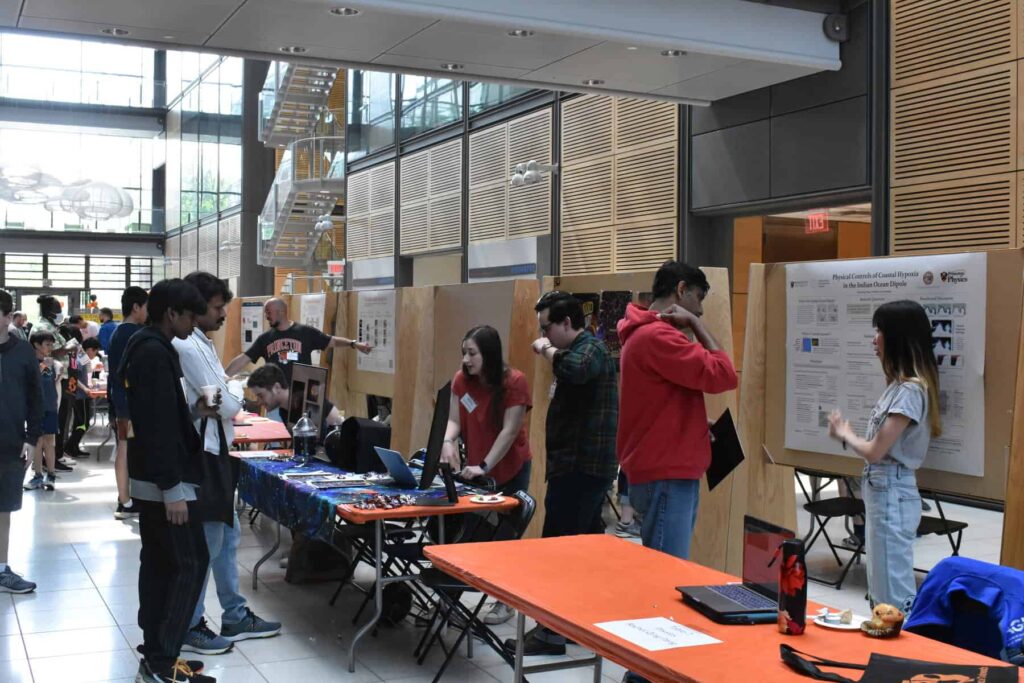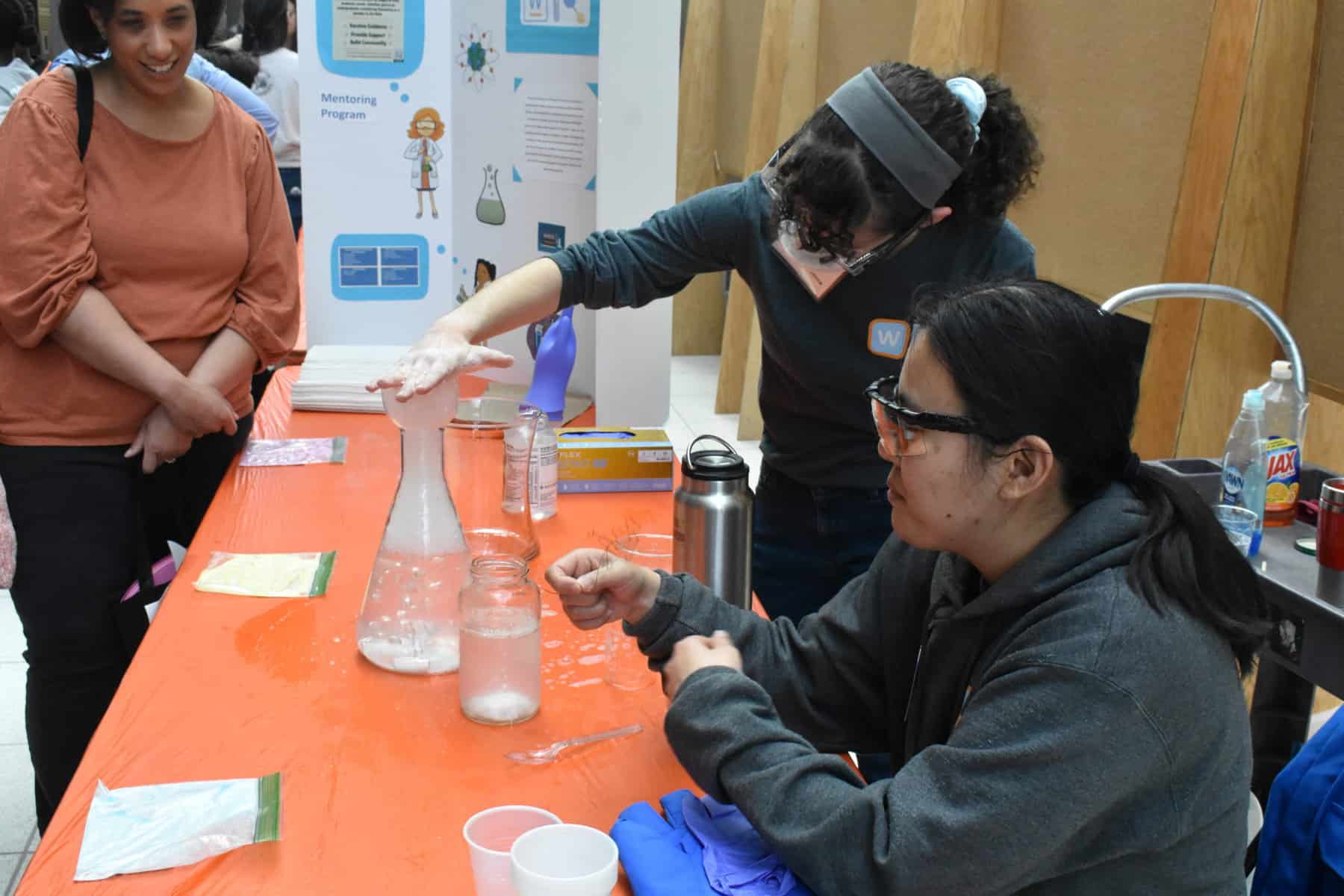Inaugural “Spring Into Science” event plants seed for sciences in young students minds
From extracting DNA of strawberries and learning how clouds form, the first-ever “Spring Into Science” event at Princeton University hopes to have ignited a curiosity for young students to pursue opportunities in the sciences.
In the Frick Atrium inside Princeton University’s Frick Chemistry Laboratory and the Princeton Neuroscience Institute, the university’s new Science Outreach program launched its signature “Spring Into Science” event on April 22.

“Exposing young students to science and the different varieties of science, and the different departments we have here at Princeton, we hope to increase the pipeline of all students in the sciences, but specifically underrepresented and minority students,” said Paryn Wallace, associate director of Science Outreach.
Students from fourth grade through 10th grade, along with their families were able to get hands-on experience and participate up-close in science activities from physics and the body and dark matter to viewing worms and understanding the brain.

“Hands-on engaging activities allow for students to get an idea of what science is all about. When they are engaged in activities and can actually touch science, they will remember it when they are older,” Wallace said.
She shared the excitement one young student had touching a brain and having the brain in his hands.
“Those are the kinds of things you may not get in your school setting, because teachers sometimes have a curriculum to follow. But when they come here, they touch science and a brain,” Wallace said.
Science Outreach at Princeton supports 10 academic departments – Astrophysical Sciences, Center for Statistics and Machine Learning, Chemistry, Ecology and Evolutionary Biology, Geosciences, Mathematics, Molecular Biology, Physics, Princeton Neuroscience Institute, and Psychology.
“Spring Into Science” had expanded from Frick Atrium to the Neuroscience Institute due to the amount and variety of science being provided at the event.
One of the main attractions at the Princeton Neuroscience Institute was an escape the cell room.
“The activity is kind of like an escape room, but it is for a cell and students are learning about the parts of a cell and how cells actually work. They have to go through a module to actually get out of the cell,” Wallace said.
“Those types of hands-on engaging activities are very instrumental in making the science stick and planting a seed for students.”
At one of the tables in the Frick Atrium, students were extracting DNA from strawberries.
They used dish detergent to breakdown the strawberry’s outer membrane of the cell and then used table salts to uncoil the DNA. The strawberries were then filtered with a coffee filter. At the end, the students mixed the strawberries with some rubbing alcohol to get the DNA.
“It’s obviously not pure DNA, because you would need better technology for that. But you get a pretty good idea,” said Lucy Liu, Princeton graduate student in the Biophysics Department. “Most people want to see DNA for the first time, it is very exciting and something neat for the kids.”
Liu noted that she hopes students grab hold of how accessible science is and that “everyone can do science.”



At the same table, tiny little worms were shown under a microscope. Researchers at Princeton can actually image every single neuron inside the brains of the worms and track their activity.
This allows them to have an understanding of how the activity neurons of the worms relates to how they move.
“I hope the kids are excited about science, curious about things and seeing how the world works,” said Sophie Dvali, a Princeton graduate student in the Physics Ph.D. program and organizer of the demo. “One of the things I find cool about science is being able to actually see things under a microscope and be able to see things move that gets people really excited.”
Young students were abuzz at Isabelle Tigges-Green and Debra Keiser’s table of a dry ice undergoing sublimation demonstration where ice goes from a solid to gas form, skipping liquid form.
Tigges-Green and Keiser are Princeton graduate students in chemistry. The duo used the gas form to build bubbles out of a large glass flask.
“It makes this lovely, cloudy kind of gas, where you can see it. It really is water vapor at that point,” Tigges-Green said. “It is making these bubbles using just a Dawn dish soap and water mixture. You run your hand across the top making a bubble that fills with the gas.”
She added that the demonstration is fun to play with because with ordinary bubbles, one can’t see the gas within them.
“This really has been fun to talk scientific principles with up-and-coming scientists. The students have been really engaged and get to play with things they don’t always get to in their classrooms,” Tigges-Green said. “Science is fun at any age and stage. Discovery is a great experience and is fun to share with other people.”
Jenna Lee and Catherine Hexter, graduate students in Princeton’s Department of Geosciences, showcased demonstrations on ocean acidification and cloud formation.
The ocean acidification demo explained how increased carbon dioxide, CO2, in the atmosphere – when it dissolves into the ocean – will lower the pH (potential hydrogen), which is problematic. When the ocean is more acidic there is less building material for things that form shells, Lee and Hexter explained.
“When students see things change or see a color change they become really interested and care about why it is happening, which is really fulfilling,” Hexter said. “Outreach events like this are part of the reason I ended up going to college doing research. I hope this invites people into science.”
For cloud formation, the cloud in a bottle demo demonstrates when the air moves from a higher pressure at low altitudes to low pressure/high altitudes creating a pressurized system compared to the outside hence ‘create a cloud’ inside the bottle.
“It has been great to speak with kids of different ages about science,” Lee said. “Not only is it a great experience to test our skills in communicating science but it is really fun to show people about things we hear related to climate and be able to see and understand the physics behind it all.”
“Spring Into Science” will not just be a one and done event as Science Outreach plans for the signature event to become an annual event.
“I would like for the students to see themselves in the science they have seen here and hope that as they continue to grow that these students see themselves doing this type of science,” Wallace said.

